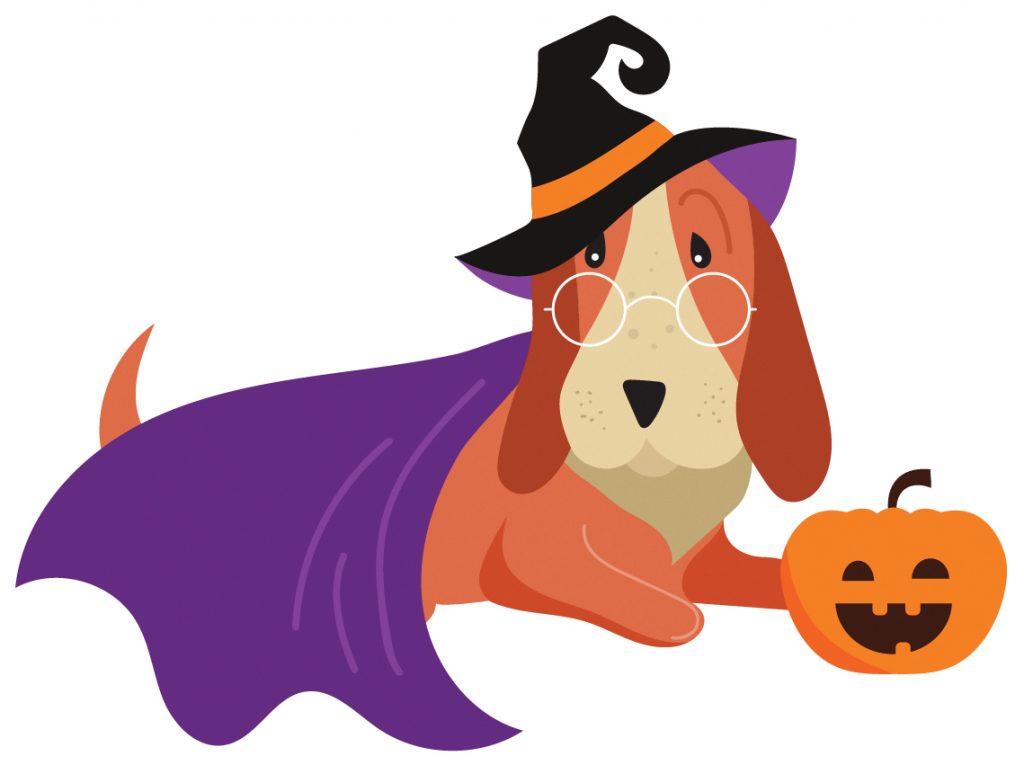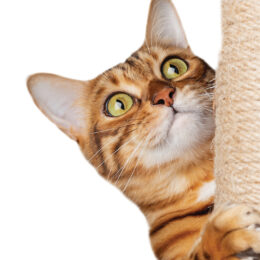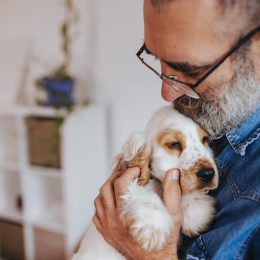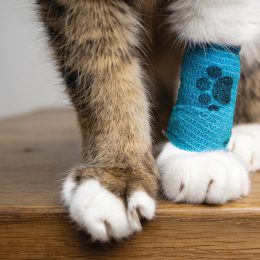
By Richard G. Biever
Halloween is supposed to be a fun time of make believe. But if Fido and Fluffy make believe the bite-sized morsels for trick-or-treaters momentarily left unattended by the front door were for them, Halloween can turn into a true fright night.
Holidays, with their special decorations and treats, are fraught with dangerous tricks for a dog and cat. And these “gobble-uns” could get them — if you don’t watch out.
Treats
Chocolate is one of the most infamous unsafe foods for pets. Cocoa seeds, from which chocolate is derived, contain chemicals and caffeine which are poisonous to dogs and cats.
Xylitol, a common sugar substitute found in gum, candy, and baked goods, is also toxic to small animals because it induces a sudden rush of insulin resulting in very low blood sugar.
Sugary, high-fat candy, or even fatty leftovers from the table, can lead to pancreatitis, a very painful, potentially fatal, inflammation of the pancreas.
Raisins, which some people prefer to distribute instead of candy on Halloween, can be extremely poisonous to dogs and cats. Very small amounts of raisins (and grapes) can cause kidney damage.
Macadamia nuts can also damage a pet’s kidneys.
In addition, when pets eat candy, they usually don’t remove the wrappers. Ingestion of foil and cellophane wrappers can cause a life-threatening bowel obstruction.
Tricks
Halloween now rivals Christmas when it comes to decorations. Like Christmas tinsel and ribbon, fake cobwebs, plastic spiders, and streamers can be tempting play objects for cats. But these can cause a blockage if ingested and can be made of toxic materials. Other decorating/entertainment concerns:
Bubble lights (and snow globes) may contain poisonous chemicals.
Glow sticks and glow jewelry can be punctured by a pet’s sharp teeth. While not usually life-threatening, their contents can cause pain and irritation in the mouth.
Costumes, if you like to dress up your pet for Halloween, shouldn’t have rubber bands or anything that might constrict your pet’s circulation, breathing or vision. Check for chewable pieces that could present choking hazards. Metallic beads, snaps or other small pieces, if ingested, can result in serious poisoning.
Also, don’t dye or apply coloring to your pet’s fur. Even if the dye is labeled “non-toxic” to humans, it could still be harmful to pets.
The cords of decorative lights, if chewed on, can cause burns, seizures, and even death.
Candles can burn the noses and wagging tails of curious pets who sometimes don’t know something is hot until it’s too late.
Liquid potpourri used to scent your home can cause serious chemical burns to the mouth if licked, especially for cats.
RICHARD G. BIEVER is senior editor of Indiana Connection
Emergency Information
If you suspect your pet has eaten something toxic or poisonous and are unable to reach your regular vet,
Purdue University’s Animal Emergency Service is available 24 hours a day, 365 days a year. Call: 765-494-1107.
ASPCA Animal Poison Control Center is also available 24/7 for poison-related emergencies: 888-426-4435. A consultation fee may apply.



